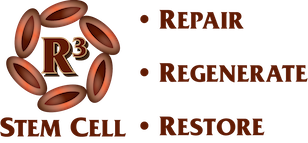Cananzi M, Atala A, & De Coppi P (2009). Stem cells derived from amniotic fluid: new potentials in regenerative medicine. Repro Biomed Online, 18, Suppl 1: 17-27.
De Coppi P, Callegari A, Chiavegato A, Gasparotto L, Piccoli M, Taiani J, et al. (2007). Amniotic fluid and bone marrow derived mesenchymal stem cells can be converted to smooth muscle cells in the cryo-injured rat bladder and prevent compensatory hypertrophy of surviving smooth muscle cells. J Urol. 2007;177(1):369-76.
Pan HC, Yang DY, Chiu YT, Lai SZ, Wang YC, Chang MH, et al. (2006). Enhanced regeneration in injured sciatic nerve by human amniotic mesenchymal stem cell. J Clin Neurosci, 13(5):570-5.
Rodrigues MT, Lee SJ, Gomes ME, Reis RL, Atala A, & Yoo JJ (2012). Amniotic fluid-derived stem cells as a cell source for bone tissue engineering. Tissue Eng Part A,18(23-24):2518-27.
